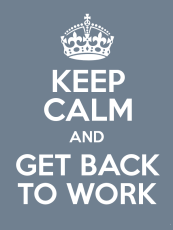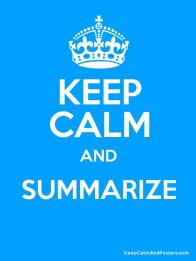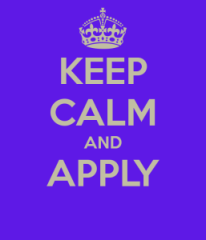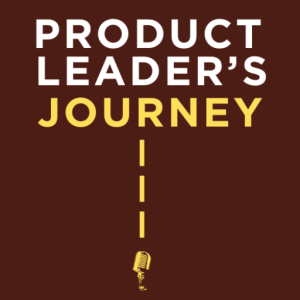Congratulations! You just completed a workshop. Hopefully it was not death by powerpoint, and the instructor made sure you were not just sitting in a chair all day, made sure you stayed engaged, asked you questions and answered yours with some real-life examples. Now, armed with this newfound knowledge and way of thinking, you are brimming with new perspective and can’t wait to get back and apply all you learnt. What comes next? How do you make the most of this investment of time, energy and money?
Reality bites.
You’ve been away for a few days, tried your best to keep up with emails and returning phone calls, but there’s a backlog. So obviously you will do your best to prioritize and make sure things don’t fall through the cracks. After all, this is not a new charade. You are adept at handling it. So this post is not about how to keep your calm after a few days out of the office.
1. Summarize
“So, how was the workshop?”
This will be one of the first questions you will get. A seemingly innocent and harmless question. But if it’s your manager asking, she wants to know that there was a good ROI on the time and expense. So anticipate and be prepared with an answer. You could say something like this, for example:
“Workshop was very helpful. My top two takeaways were win-loss analysis and techniques for prioritizing the backlog. I am writing up a short summary. I’d love to have some time in the staff meeting to share some best practices I learnt and how we can apply them.”
 I met a product manager who had just attended one of the popular workshops in the US. I asked him what he was doing different as a result. He had a hard time answering the question. After a couple of days of good intellectual conversation and good meals, he had no idea of how he was going to apply what he learnt.
I met a product manager who had just attended one of the popular workshops in the US. I asked him what he was doing different as a result. He had a hard time answering the question. After a couple of days of good intellectual conversation and good meals, he had no idea of how he was going to apply what he learnt.
You are a different person even from the investment of a short two or three days. You have to be, otherwise the workshop has not delivered for you. Your organization expects you to come back with a new perspective and new ways of thinking and doing things, so it is your duty to figure out how the before and after picture are going to look different. If not, your manager is going to think twice about sending you to another workshop.
2. Revise
The reference material such as books, frameworks, etc., that you got with the workshop typically get put on a bookshelf, or worse, into a drawer. And that’s where it stays, until it’s time to move your home or your office, at which point, it comes out of hiding. You fondly flip through the pages of the book, reminiscing about the great time you spent meeting new people and learning new things, and back it goes into another box. This is the number one mistake most people make, and I have been guilty of it too.
I recently spoke with a participant of my Product Management workshop from six months ago. He told me that he could recall all the Q&A that took place in those three days, and proceeded to share how some of the conversation had been helpful at his work. Now he may have a great system of note ta king or a photographic memory. Most of us don’t. So I asked him what his magic trick was.
king or a photographic memory. Most of us don’t. So I asked him what his magic trick was.
He said he blocked a half hour once a week for the following one month after the workshop to review and revise the material in the book, and relate it to his product and company. It refreshed in his mind the conversation that took place around a particular topic. He made some additional notes, and that prompted him to do some additional reading.
What a great practice, I thought! Revision and continuity is important to reinforce any learning.
3. Apply
It is not realistic that you will get to apply all the things learnt right away.
When you start to think about identifying concrete next steps, ask what stage of the lifecycle your product is in. Is it a relatively new product, or fairly mature? Your area of focus and application should match to what stage of the lifecycle your product is in.
your product is in.
Understand the critical priorities and success criteria for the product, and see what part of your newfound knowledge you can put to use.
Perhaps you decided that you are going to conduct at least one win and one loss interview with customers this quarter. Or you are going to focus on defining customer and user personas for your product. Or perhaps you decided it was important to partner with product marketing and focus on product positioning and sales enablement.
Once you have identified what’s going to help your product and team, commit to it, and plan to act on it.
4. Connect
Connect on LinkedIn with your co-participants at the workshop. Even when we do corporate workshops, we often see people from other departments, other product lines and they do not necessarily know each other, there are some new people on the team. So grow your network.
Share valuable, relevant articles and information.  Take the opportunity and time to add value in small but meaningful ways.
Take the opportunity and time to add value in small but meaningful ways.
Connect with the instructors of the workshop. Once in a couple months, share how you’ve been able to apply the learnings, ask questions. We strongly encourage our participants to do this, and frequently hear from participants of our workshops, as much as from two or three years ago. It’s great to stay in touch and learn about their career progress. So do take the opportunity.
If there are other things that are part of your ritual in order to get the most out of any workshop, do mention them in the comments.
What does all this have to do with keeping calm? Well, it never hurts, especially if you are a product manager!
Image source: keepcalmandposters dot com, keepcalm-o-matic dot co dot uk, admissions dot vanderbilt dot edu, lisasonora dot com
